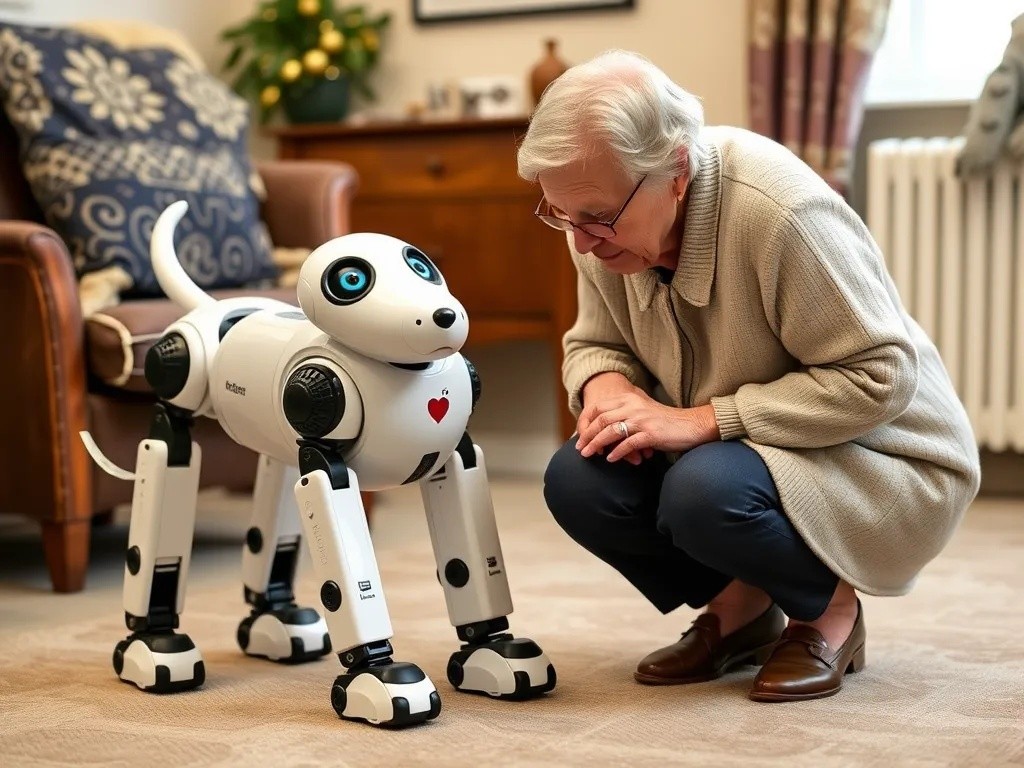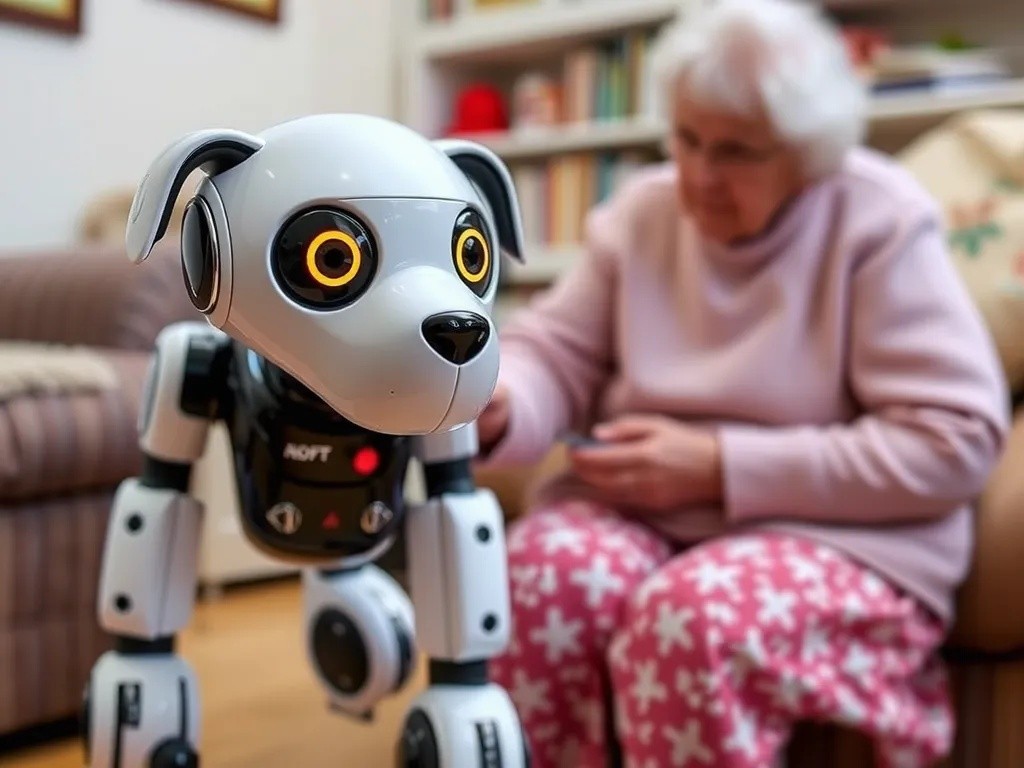In recent years, there has been a significant advancement in the field of Artificial Intelligence (AI) and Augmented Reality (AR). These technologies have become increasingly popular and have the potential to enhance virtual experiences in various fields such as gaming, education, healthcare, and...
Robot Dog Becomes Best Friend to Lonely Elderly People

In nursing homes and senior living facilities across the world, a new kind of companion is wagging its tail and bringing joy to elderly residents. Robot dogs, once considered mere technological novelties, are now emerging as powerful therapeutic tools that combat loneliness and provide emotional support to aging populations.
The Growing Crisis of Elderly Isolation
Social isolation among elderly people has reached epidemic proportions, particularly following the COVID-19 pandemic. Studies reveal that chronic loneliness affects up to 35% of adults aged 45 and older, with even higher rates among those in care facilities. This isolation doesn't just affect emotional well-being—it can lead to serious health consequences including depression, cognitive decline, and increased mortality risk.
Traditional Solutions Fall Short
While traditional approaches like group activities and volunteer programs help, they often face limitations:
- Limited availability of human volunteers and staff
- Scheduling conflicts with residents' varying needs
- Difficulty maintaining consistent one-on-one attention
- Challenges during health crises or facility lockdowns
Enter the Robot Companion
Robot dogs like Sony's AIBO, Joy for All's companion pets, and other advanced models are filling this gap with remarkable success. These artificial companions are designed specifically to provide emotional support through lifelike behaviors, responsive interactions, and consistent availability.
Advanced Features That Create Real Bonds
Modern robot dogs incorporate sophisticated technology that makes them surprisingly effective companions:
- Artificial Intelligence: They learn individual preferences and respond to voice commands
- Realistic Movements: Tail wagging, head tilting, and walking patterns mimic real dogs
- Sensory Interaction: They respond to petting, recognize faces, and react to their environment
- Emotional Recognition: Advanced models can detect mood changes and respond appropriately

Transforming Lives in Care Facilities
The impact of robot dogs in elderly care settings has been profound and measurable. Residents who previously showed signs of withdrawal and depression are now engaging more actively with their robotic companions and, consequently, with human caregivers and fellow residents.
Documented Benefits
Research studies have shown significant improvements in multiple areas:
- Reduced Depression: Residents report feeling less lonely and more positive
- Increased Social Interaction: Robot dogs become conversation starters between residents
- Improved Cognitive Function: Caring for and interacting with robots provides mental stimulation
- Better Sleep Patterns: The comfort of a companion nearby helps reduce nighttime anxiety
- Enhanced Sense of Purpose: Residents feel needed and responsible for their robotic pet
Real Stories, Real Impact
Margaret, an 89-year-old resident at a care facility in California, hadn't spoken to other residents in months before receiving her robot dog companion. Within weeks, she was showing off her "pet" to visitors and engaging with staff about its daily activities. Similar stories emerge from facilities worldwide, where these robotic companions have become catalysts for renewed social engagement.
Advantages Over Live Pets
While live animals provide wonderful companionship, robot dogs offer unique advantages in care settings:
- No risk of allergies or bites
- No feeding, grooming, or veterinary care required
- Available 24/7 without fatigue
- Consistent behavior regardless of mood or health
- No concern about animal welfare in institutional settings
The Future of Robotic Companionship
As artificial intelligence continues to advance, robot companions are becoming increasingly sophisticated. Future models may include health monitoring capabilities, medication reminders, and even more nuanced emotional intelligence. The integration of these technologies promises to make robotic companions even more effective at addressing the complex needs of aging populations.
The success of robot dogs in elderly care represents more than just technological achievement—it demonstrates our growing understanding of what it means to provide compassionate care. These artificial companions aren't replacing human interaction but rather creating bridges to it, helping isolated seniors rediscover joy, purpose, and connection in their daily lives.



